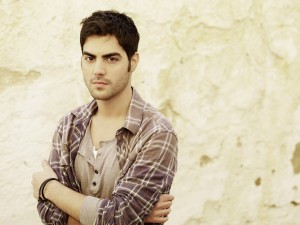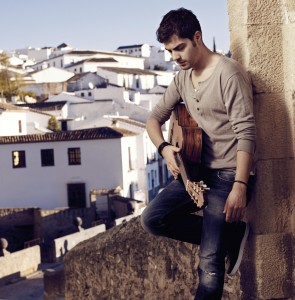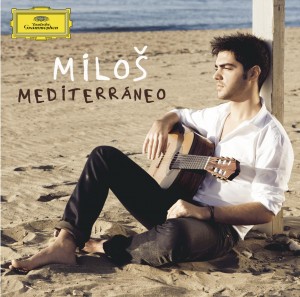Program Notes: Narek Hakhnazaryan
César Franck: Sonata in A major
For most of his life, Franck led a relatively quiet existence as an organist and pedagogue, emerging from obscurity as a composer only near the end of his life. His only violin sonata (which has also been arranged for numerous other instruments, notably flute, viola and cello) was created in 1886 as a wedding gift for his friend, the famous Belgian violinist Eugène Ysaÿe, who gave the premiere the same year. This sonata remains one of the composer’s most popular works, and well demonstrates his spontaneous, exuberant variety of romanticism.
The first three notes (D – F# – D) of the cello’s initial statement serve as the sonata’s principal thematic link. This opening movement is in standard sonata form, with the first theme assigned initially to the cello, the second to the piano. The serene lyricism of the first movement is replaced by restless excitement and intense passion in the second. The tension gradually abates, and a less stormy Quasi lento section follows. After restatements of material from both sections, the movement closes with a coda, which consists of a long crescendo building to an exciting climax. The third movement has an improvisatory nature, and features cadenza-like passages for the cello. The finale is without doubt one of Franck’s most charming and inspired creations. Canonic imitation (one voice following the other at a specified time interval) at the octave is used throughout, creating between the two instruments a remarkable dialogue seldom matched in the repertory of the accompanied sonata.
Frédéric Chopin: Introduction and Polonaise brillante, Op. 3
Everyone knows that the piano was the heart and soul of Chopin’s existence, but if the composer could be said to have had a second love, it was for the cello. His interest in this instrument began in his teens. Scattered among his many piano pieces are four works that include cello: the Introduction and Polonaise brillante; a Trio for piano, violin and cello; the Grand Duo Concertante for cello and piano; and the Cello Sonata – in fact, the sum total of his chamber music output except for a set of variations for flute and piano.
The work we hear this afternoon was composed in two separate parts. First came the Polonaise in October of 1829 when Chopin was just nineteen, written for the amateur cellist Prince Radziwell and his teen-age pianist daughter Wanda. However, the dedication went to another cellist, the Viennese virtuoso Josef Merk. For still a third cellist, the Pole Józef Kaczynski, Chopin wrote the Introduction in April 1830 for a performance together with the Polonaise. The brilliante part of the title may be Chopin’s or it may be the Viennese publisher Mechetti’s. The polonaise is indeed brilliant in its effect, despite the composer’s own opinion that there was “nothing to it but dazzle.” True, “there is dazzle, and plenty of it,” writes Mieczyslaw Tomaszewski. “After all, brillant means sparkling. But there is also bravura, verve and a Slavic, typically polonaise vigor, as well as an undeniable feel for the spirit of the dance.”
György Ligeti: Solo cello sonata
György Ligeti followed in the line of distinguished twentieth-century Hungarian composers that runs from Bartók and Kodály through Sándor Veress and Miklós Rózsa. When he died seven years ago at the age of 83, he was internationally recognized as one of the leading composers of his generation. Since the early 1960s, Ligeti (pronounced LIG-ih-tee) had been on the cutting edge of experimental music as one of the leaders in the emancipation of sound effects, timbres and textures from their traditionally subordinate roles, giving them a raison d’être of their own. Many of us became aware of his music through Stanley Kubrick’s 1968 film 2001: A Space Odyssey, in which the instrumental sonoric tapestries of Atmosphères (1961), the Requiem for voices and orchestra, and the choral Lux aeterna (1966) were used as fitting backdrops for desolate moonscapes.
The two movements of this nine-minute sonata were written five years apart in very different character, though the composer refers to this period of his stylistic development as “prehistoric.” “Dialogo,” composed in 1948, consists of alternating statements of pizzicato chords – brief, submissive, conciliatory – and lyrical outpourings – expansive, reflective, ruminative. “Capriccio” is a virtuosic display of madly scurrying fragments of varying lengths that exploit to the fullest the cello’s enormous range.
Due to the repressive Hungarian regime under which Ligeti lived until 1956 (when he fled the country) and to his unsettled life for years thereafter, the first public performance of the sonata was given only in 1983. The score was published in 1990 and first recorded that year by Matt Haimovitz.
Mikhail Bronner: The Jew: Life and Death
Mikhail Bronner studied composition with Tikhon Khrennikov and orchestration with Yriy Phortunatov at the high School of the Moscow Conservatory, then continued his studies at the Moscow Conservatory where he completed graduate work in 1981. Soon thereafter he began attracting professional recognition, particularly for his ballet scores for An Optimistic Tragedy (1985) and The Taming of the Shrew (1996), both presented at leading theatres in Moscow. Much of his music is theatrically oriented, and much of it relates to Jewish history and/or Old Testament themes and characters. His Jewish Requiem (1994), performed throughout Germany, is a notable example. The Jew: Life and Death dates from 1996. It is a deeply introspective, passionate work that portrays with grim realism in the space of ten minutes the tragic element in Jewish history. Images of sighing, weeping, the desperate wringing of hands and the anguish of darkly troubled souls are portrayed with grim realism.
Piotr Ilyich Tchaikovsky: Nocturne, Op. 19, no. 4, and Pezzo Capriccioso, Op. 62
As Tchaikovsky is one of Bronner’s favorite composers, it is entirely appropriate that Bronner’s work be followed by music of the Russian master. The Nocturne is a transcription Tchaikovsky made in 1888 of a piano piece dating from 1873 (the fourth of the Six Pieces Op. 19). Written in simple ternary form (ABA), its central, slightly faster episode was borrowed years later by Stravinsky as one of the tunes he incorporated into his ballet score The Fairy’s Kiss. When the melancholic opening material returns it is slightly varied.
Tchaikovsky wrote the Pezzo capriccioso for his cellist fried Anatoly Brandukov, who gave the first performance on December 7, 1889 with the composer conducting. The title is meant to suggest a kind of flippancy or “toying around” with a basic mood. In doing so, the soloist gets to demonstrate a variety of skills: tone quality, singing line, technical agility and control in the high range.
Program notes by Robert Markow, 2013.





